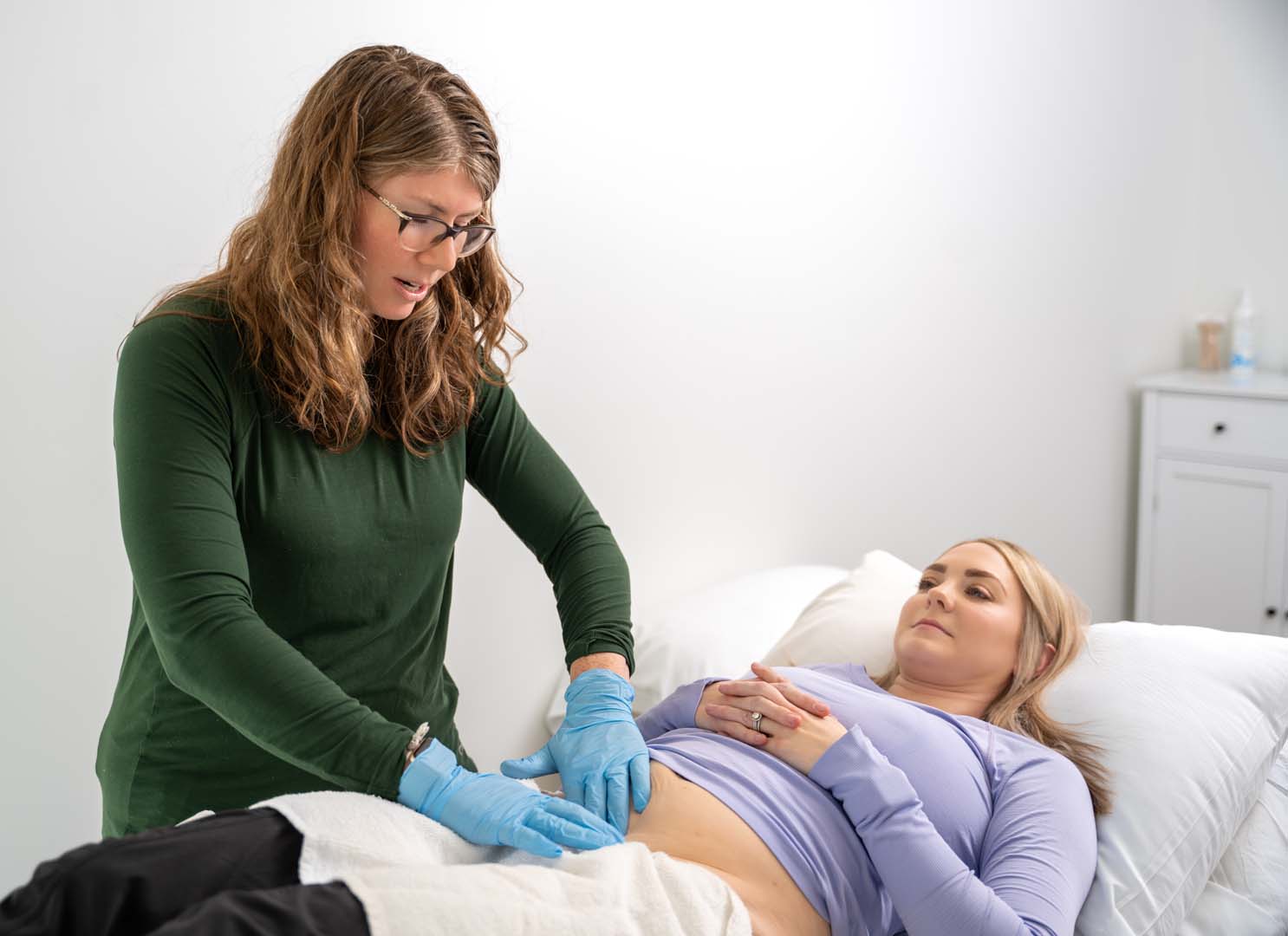The Truth About Abdominal Separation
What Is DRA?
Diastasis recti abdominis or DRA is a separation of our abdominal muscles, specifically our 6 pack muscles in our abdomen, the Rectus Abdominis. We see the left and and the right side of this muscle separate to create more room.

When Does It Happen?
A common time this happens is in pregnancy. It is so common that the research tells us that 90-100% of all people who are pregnant have a DRA by the 3rd trimester. The body needs more space for the growing belly so it creates more by pushing the muscle apart. We may start to notice this separation in pregnancy when we are getting up from laying down, transitioning from sitting or from performing an exercise that never used to bother us. You may notice a bulge or a coning shape at the abdomen with exertion. It doesn’t always cause pain though it can feel uncomfortable.
This separation that started in pregnancy continues into the postpartum period. Some people get checked at their 6 week visit but most unfortunately don’t. It is important to assess for a DRA because it gives insight into how well your body is handling pressure. Poor pressure management can lead to things like core weakness, abdominal gripping, pelvic pressure, urinary leakage, poor posture etc.
What Can I Do If I Have It?
The idea of your muscles being separated or visually seeing a bulge in the abdomen can feel scary! The good news is there is much to be done to help encourage healing.
A pelvic health clinician will check for a diastasis recti. When we do an assessment for a DRA we check the width of the separation or how many fingers can fit between the 2 sides of the muscle and the depth of the separation or how firm it is under our fingers. An older view of diastasis focuses on “closing the gap” but the recent research taught us that the depth is more important. The depth tells us how well your deep core muscles are working.
We will assess the whole body to see what we can do to encourage healing of a DRA. We look at the abdominal muscles, rib cage, upper back, lower back, pelvis, pelvic floor which all can impact a DRA. We will come up with a plan of how to appropriately load the abdominal muscles to safely return to activities that you enjoy.

Next Steps
Want to know if you have a diastasis recti? If you think you do have one, would you like to know what you can do about it? Want guidance on how to return to exercise safely? Give us a call!
We offer:
- Free Pelvic Floor Screens
- 1:1 visits
- Therapeutic Massage
- Trigger Point Dry Needling
Need more pelvic health, prenatal and postpartum support, nutrition, and workouts from home? Join Thrive by Taylor Wellness!!
Led by a team of experts, Thrive provides you with a full library of workouts, nutrition guidance and recipes, and pelvic health content! Whether you are expecting your first baby or post-menopausal, Thrive will have valuable content specific for your life stage.
Click here to learn more: www.taylorwellnesseducation.com/thrive
Written by Dr. Jesse Rapp
